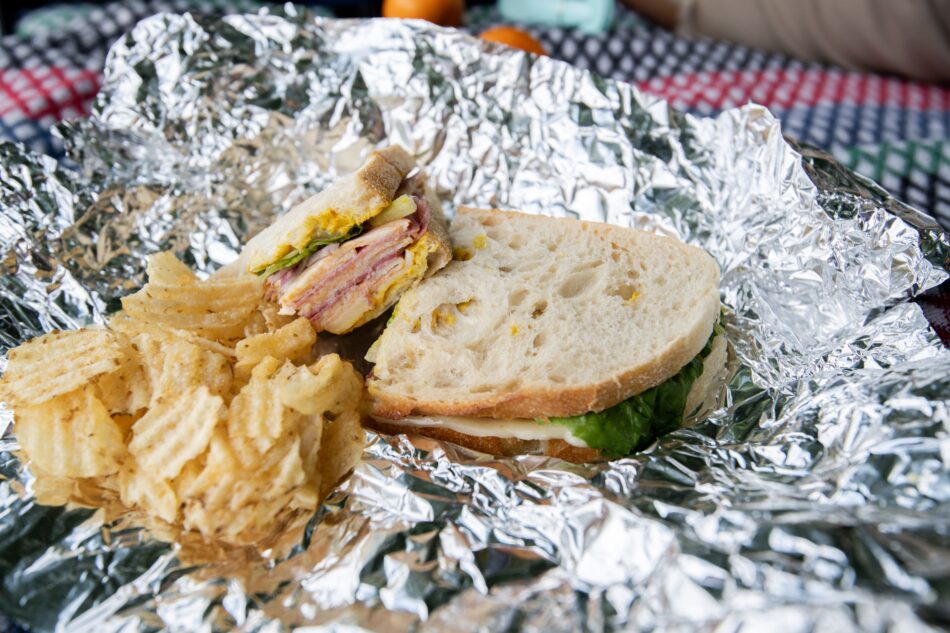Prepare Your Business for New Food Waste Legislation in the UK
From 31 March 2025, most UK businesses must arrange separate food waste collections. Learn and prepare for the new food waste legislation in the UK.

Kitchen foil is commonly used in homes and businesses when cooking and to help keep food fresh for lunches. Once you’ve eaten your lunch or finished cooking though, how should you dispose of the kitchen foil? The good news is that recycling foil in your kitchen is possible – just it’s not straightforward.
However, follow some of the steps below and you’ll find recycling foil becomes second nature, as a great way to help protect the environment. Understand everything you need to know about disposing of and recycling foil with these answers to some frequently sked questions about binning kitchen foil.
The first type of foil invented was tin foil. Its earliest uses were the lining of cigarettes and for wrapping chocolate bars, such as Toblerone, in the early 1900s. The term tin foil is carried over from industrial uses where actual tin was used. However, it was never really used domestically.
In 1910 tin foil was replaced by aluminium foil when the first aluminium foil rolling plant opened in Switzerland. Tin foil was properly phased out after the second world war, as aluminium foil became readily available to the general public.
Modern domestic kitchen foil is made of aluminium. The aluminium ore is refined to remove any trace elements such as silica, iron, and water. Aluminium alloys may be used, typically made up of 92 to 99% aluminium with other elements that can change the properties of the finished foil.
The pure aluminium or aluminium alloy is melted and poured into a cast. It’s then rolled to form a large sheet of foil. This process is repeated until the desired thickness is reached. This gives a very large roll of aluminium foil that’s flattened, cut, and then re-rolled onto smaller spools, which are placed into boxes and prepared to be shipped.
Yes, recycling aluminium foil is possible, provided it’s cleaned beforehand – much like recycling aluminium trays. If possible, you should clean the foil to remove any bits of food, grease, or other liquids, then scrunch it into a ball. When using multiple pieces of foil, scrunch them all together – the bigger the ball, the easier it is to recycle aluminium foil.
Recycling foil is the best way to dispose of it. First you need to ensure it’s clean and dry, then you can throw it away with your other household recycling. For businesses, you can normally place it in your bins for dry mixed recycling or metal recycling.
If the kitchen foil is caked in food, grease, or burnt-on bits of food then it may not be suitable for recycling. Even when you have clean foil, you should also try and scrunch it up first and if it unfurls then it might not be recyclable either. In these cases, you should throw kitchen foil away with your general waste.
Your mixed recycling or metal waste will be transported to a nearby recycling plant, where it’s separated into different streams. To recycle aluminium foil, it’s melted down into raw aluminium to be used again. This could be used to make new sheets of foil, foil trays, or cans.
The main problem with kitchen foil is that to recycle it, it must be clean. Many people are unaware of this or simply don’t have time to clean the foil before recycling. However, this renders it non-recyclable and causes it to end up in general waste.
Foil thrown away with general waste will either end up in landfill or be incinerated. Aluminium foil isn’t biodegradable and will take between 80 and 400 years to decompose. Incineration also emits greenhouse gases, both methods that can harm the environment when a greener alternative of recycling aluminium foil is possible.
There are several environmentally friendly alternatives to using kitchen foil, such as:
Or you could just store items in glass containers, which can be easily cleaned and continuously reused.
You can reuse foil in your kitchen instead of buying new kitchen foil if it’s not too soiled. Crumple up used kitchen foil and use it as a pot scrubber or scrunch it into balls and fill a plant pot to act as drainage. As a last resort, you can even just use it as part of an art project.
When the foil is clean and intact you might be able to reuse it as it is. It’s good to reuse kitchen foil where possible as its creation is extremely energy-intensive and not good for the environment. From extracting raw materials to transporting to your local supermarket, lots of carbon emissions are produced.
To recycle kitchen foil, you can simply place it in your recycling bin at home and your local council or authority will collect and recycle it for free. There will be minor water costs to clean it first. Some supermarkets also have specific recycling bins for used foil, or you can visit your nearby recycling centre to dispose of it.
For businesses, you need to arrange commercial waste collection by licensed waste carriers. Whether you dispose of kitchen foil with dry mixed recycling or metal waste, there’ll be a small cost for its removal. Contact us today for a bespoke and free quote to dispose of your kitchen foil and other waste types.
A few interesting facts about kitchen and aluminium foil are that:
Find out more about other rubbish streams.
Get a fast FREE quote for your foil waste
From 31 March 2025, most UK businesses must arrange separate food waste collections. Learn and prepare for the new food waste legislation in the UK.
The study participants included business owners and company employees, revealing unexpected findings about corporate environmental practices.